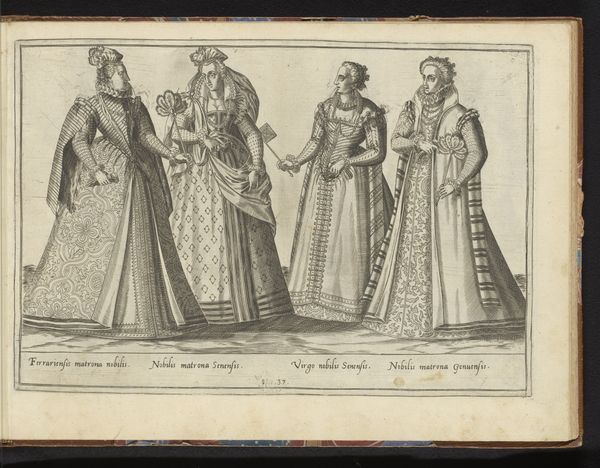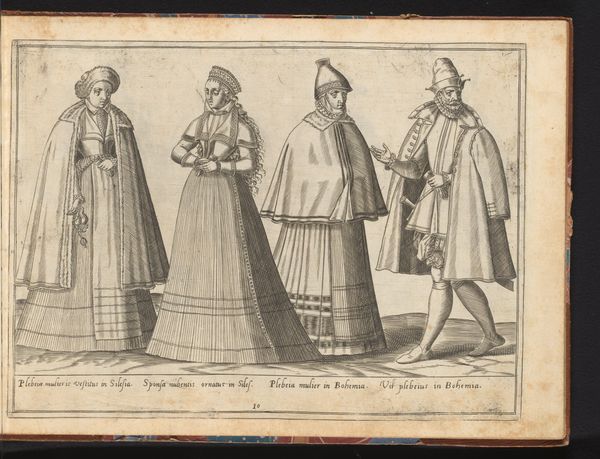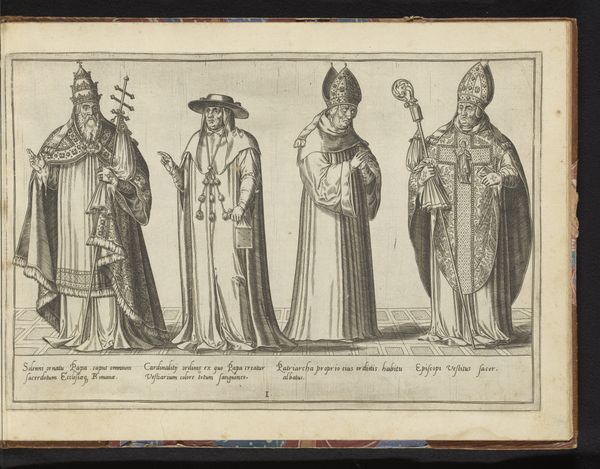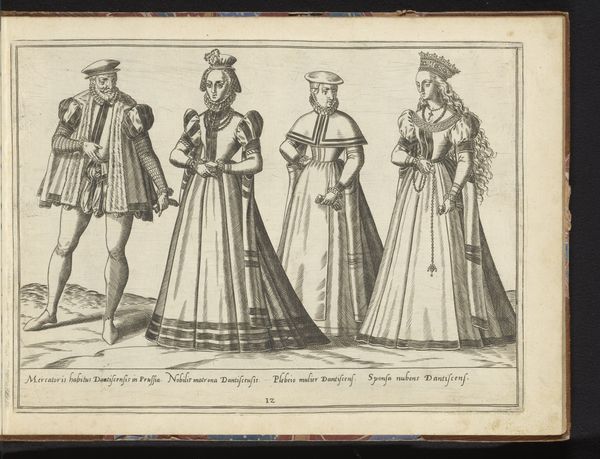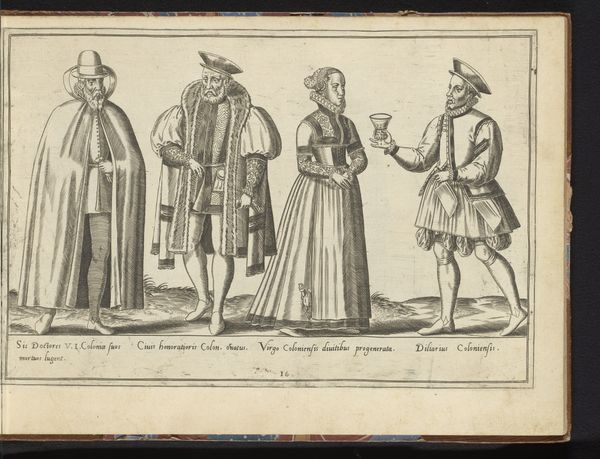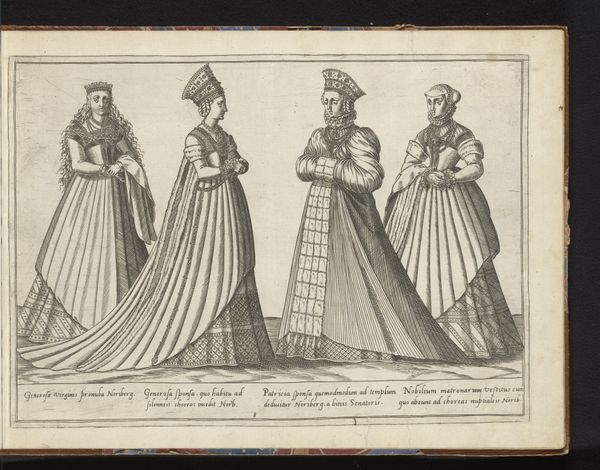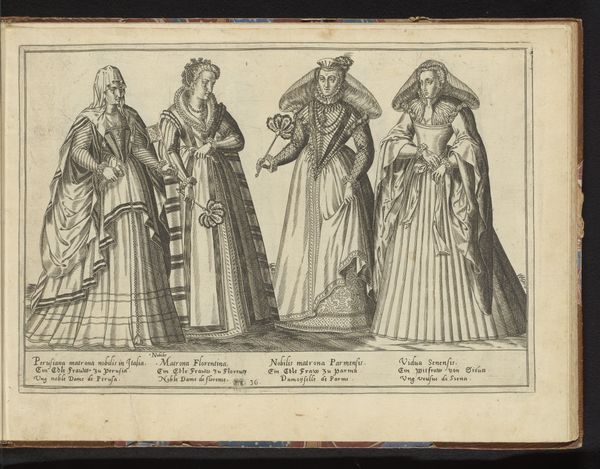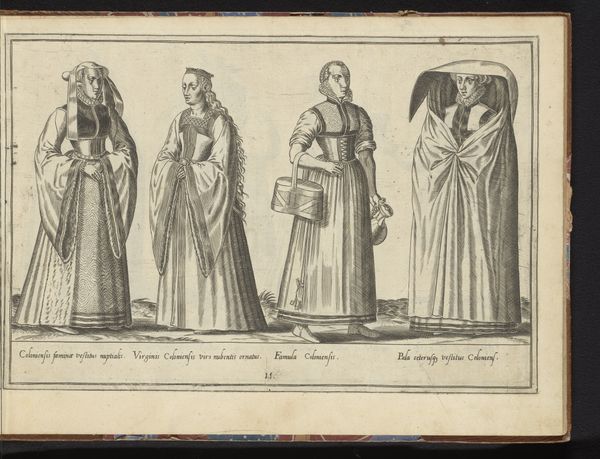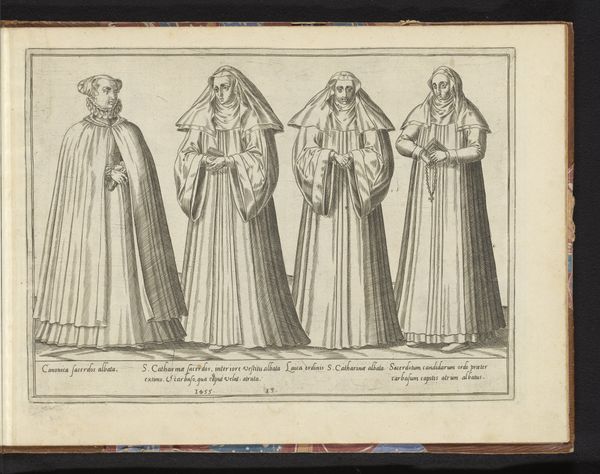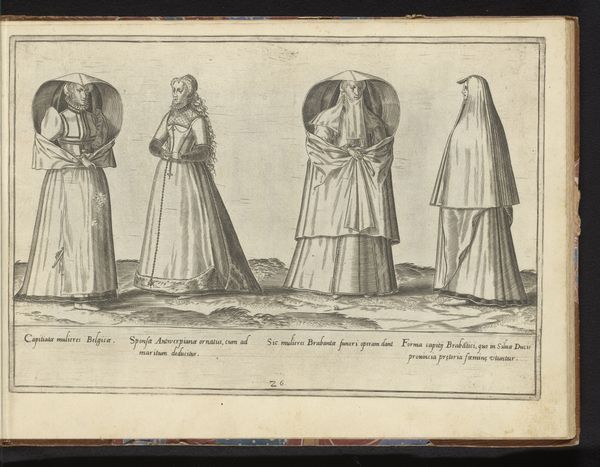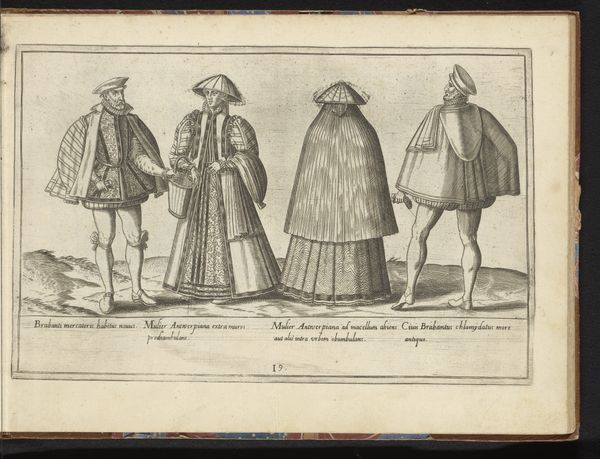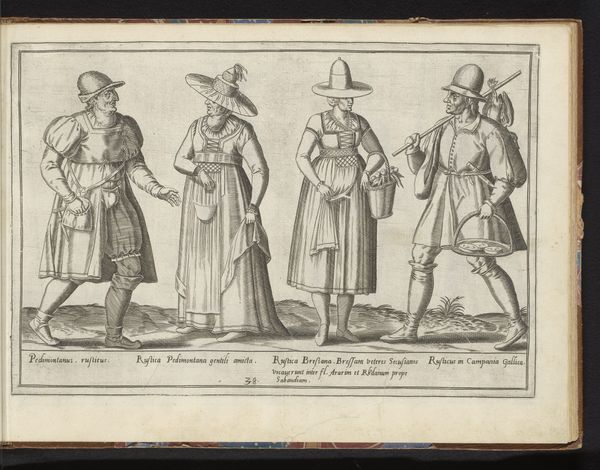
Drie vrouwen en een man, gekleed volgens de mode van ca. 1580 in Kleef 1581
0:00
0:00
abrahamdebruyn
Rijksmuseum
drawing, print, paper, engraving
#
portrait
#
drawing
# print
#
figuration
#
paper
#
coloured pencil
#
genre-painting
#
northern-renaissance
#
engraving
Dimensions: height 265 mm, width 360 mm
Copyright: Rijks Museum: Open Domain
Curator: So, we're looking at "Drie vrouwen en een man, gekleed volgens de mode van ca. 1580 in Kleef," a print from 1581 by Abraham de Bruyn, held at the Rijksmuseum. Editor: It's interesting how stark it is; they all seem very contained by their clothes. What do you see in this piece that maybe I'm missing? Curator: It is interesting, isn't it? I see a snapshot of 16th-century Kleve society, a moment frozen in time, deeply embedded within a very specific social hierarchy. What’s most striking is how meticulously their identities are constructed, perhaps dictated, through clothing. The textiles, the cut, even the posture - these are not mere aesthetic choices. They speak volumes about class, gender roles, and perhaps even marital status. Editor: Right, it’s like fashion as a form of enforced identity. Does that Latin text have anything to do with reinforcing this? Curator: Exactly. And yes, the text reinforces the message. "Clivis," or Kleve, is central. De Bruyn is not just showing us clothes; he's defining a community, creating a visual representation of its social order. These garments aren’t just protecting bodies; they're performing societal expectations, policing the boundaries of who these individuals are allowed to be within their community. Where do you see agency in their presentation, or is it entirely constrained? Editor: That's a really insightful point. I don't know that I see much agency, maybe just in the details - like, the way someone chooses to hold their hands. This has given me a lot to consider. Curator: Precisely. It's in those subtle gestures, in the almost imperceptible details, where we might find the quiet rebellion or the nuanced negotiation of identity within those confines. It's a powerful reminder that even in the face of strict social codes, individuals often find ways to express themselves.
Comments
No comments
Be the first to comment and join the conversation on the ultimate creative platform.
